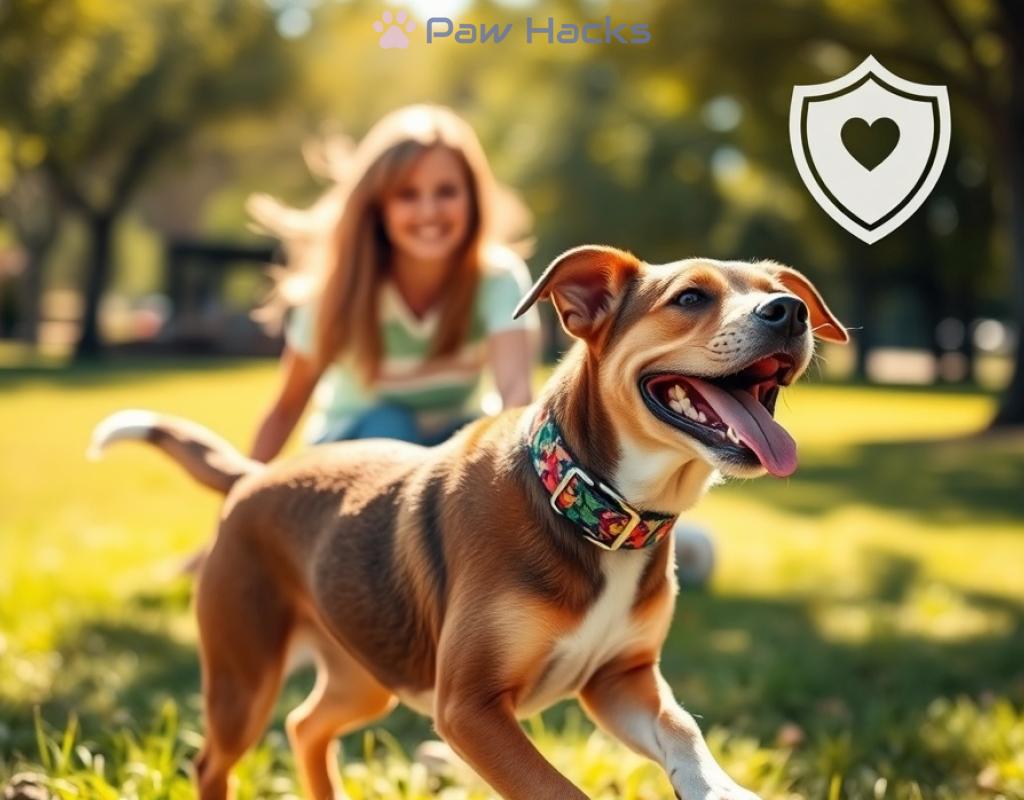Dealing with Resource Guarding in Rescues
Understanding Resource Guarding: What Is It and Why Does It Happen?
Resource guarding is a behavior commonly seen in dogs, especially those that come from challenging environments. It refers to a dog’s instinct to protect valuable items, such as food, toys, or even people, from perceived threats. This behavior can stem from a variety of factors, including past traumas, lack of resources, or even innate survival instincts. Understanding why this happens is crucial for rescuers, pet owners, and trainers alike.
This instinctive behavior can manifest in various ways—from growling and snapping to more subtle signs like stiffening or lip curling. Recognizing these signs early can help avoid dangerous situations and promote a peaceful coexistence.
To effectively address resource guarding, it’s essential to understand its origins. Dogs that have been abandoned, neglected, or abused may exhibit this behavior as a way to defend what little they have left. Additionally, puppies learn resource guarding from their mothers and siblings during playtime and feeding. This can create a cycle that’s hard to break, especially in a rescue setting.
There are several reasons why a dog may guard resources:
- Past Trauma: A history of neglect or abuse may lead a dog to feel insecure about their resources.
- Instinct: Natural instincts urge dogs to protect what they perceive as valuable.
- Competition: In multi-pet households, competition for attention or resources can trigger guarding behavior.
Understanding these root causes allows rescuers to tailor their approach, offering compassion and patience as they work to help these dogs feel safe.
Dealing with resource guarding in rescues requires a strategic and compassionate approach. Here are some effective methods to help mitigate this behavior:
- Training and Socialization: Gradual exposure to other pets and people can help reduce guarding behaviors.
- Positive Reinforcement: Rewarding desired behaviors can encourage dogs to share their resources.
- Safe Spaces: Providing a safe, designated area where dogs can retreat can reduce anxiety and the urge to guard.
Implementing these strategies may take time, but with patience and consistency, many dogs can learn to overcome their guarding instincts. Remember, understanding and empathy are key in helping these dogs find their way to a more trusting and secure life.
Effective Training Techniques to Reduce Resource Guarding Behavior
When addressing resource guarding in dogs, establishing a solid foundation of trust is paramount. This trust is built through consistent and positive interactions with the dog. It is crucial to acknowledge the dog’s feelings and behaviors without judgment, as many of these dogs may have faced significant hardships in their past. By fostering a supportive environment, you pave the way for effective training.
One of the most effective techniques to mitigate resource guarding behavior is through gradual desensitization and counter-conditioning. This involves introducing the dog to situations where they might feel threatened in a controlled manner. Start by providing the dog with their favorite resource, such as a toy or food, while maintaining a safe distance from potential triggers. Over time, gradually decrease this distance while pairing the presence of the trigger with positive experiences, such as treats or praise. This method helps the dog associate the presence of the trigger with something enjoyable, thereby reducing their anxiety.
Utilizing positive reinforcement encourages dogs to adopt more favorable behaviors. When the dog shows signs of sharing or being relaxed around their resources, reward them immediately with treats or affection. This reinforces the idea that sharing their resources leads to positive outcomes. For instance, if a dog allows another pet to approach them while they are eating, immediately provide a treat to celebrate that behavior. Over time, this consistent reinforcement can help shift their mindset from guarding to sharing.
In conclusion, while resource guarding can stem from deep-seated fears and instincts, employing effective training techniques can significantly alter a dog’s response to perceived threats. By prioritizing trust, utilizing desensitization, and reinforcing positive behaviors, rescuers and pet owners alike can foster a more harmonious environment for both the dogs and their human companions.
Creating a Safe Space: How to Manage Your Home Environment
Creating a safe and secure environment is crucial for dogs exhibiting resource guarding behavior, especially in rescue situations. A well-managed home can significantly reduce anxiety and help dogs feel more at ease. This involves thoughtful planning and adjustments that cater to the unique needs of these dogs. By establishing a safe space, you not only make your home welcoming but also promote a sense of security for your furry companions.
When setting up a safe space for your dog, consider areas that are quiet and free from potential stressors. This should be a designated spot where the dog can retreat whenever they feel overwhelmed. Here are some key elements to consider:
- Quiet Location: Choose a corner of your home that is away from high foot traffic and noise. This could be a cozy nook in your living room or a separate room altogether.
- Comfortable Bedding: Provide soft bedding or a comfortable crate where the dog can relax. Ensure it is sized appropriately to promote a sense of security.
- Personal Items: Allow the dog to have their favorite toys or blankets within the space to create a sense of familiarity and comfort.
- Controlled Access: If there are other pets in the home, ensure that the safe space can be accessed without threat. This could mean using baby gates or barriers to limit interactions during stressful times.
Consistency is key when managing a dog’s environment. Establishing a routine helps dogs know what to expect, which can reduce anxiety and guarding behavior. Here are some strategies for creating a stable environment:
- Regular Feeding Times: Feed your dog at the same time each day to instill a sense of predictability.
- Scheduled Playtime: Schedule specific times for play and interaction to build trust and social skills without overwhelming the dog.
- Defined Rules: Clearly outline the rules of the house, such as where the dog can and cannot go, to reduce confusion and potential triggers.
Being attentive to your dog’s behavior is essential. Monitor how they respond to different stimuli and be ready to make adjustments to their environment. If you notice signs of stress, such as growling or stiffening, it may be time to reassess the setup. Keeping a log of behaviors can help identify patterns and triggers, allowing you to adapt the environment accordingly.
In summary, creating a safe space within your home involves thoughtful planning, establishing routines, and being observant of your dog’s needs. With the right environment, you can help your rescue dog feel secure, ultimately leading to a decrease in resource guarding behaviors.
Recognizing the Signs: Early Warning Signals of Resource Guarding
Understanding the subtle indicators of resource guarding is crucial for pet owners, trainers, and rescuers alike. By identifying these early warning signals, you can intervene before the behavior escalates, fostering a safer environment for both the dog and those around them. Here, we will delve into the distinctive signs that may suggest a dog is beginning to guard their resources.
Resource guarding behavior can manifest in a spectrum of ways, and it’s important to be vigilant in recognizing these signs. Growling, snapping, and biting are often the most evident reactions, but there are also more subtle cues that may go unnoticed. A dog may stiffen their body posture or fixate on the object they are protecting, signaling discomfort. Additionally, lip curling or showing teeth without a bite can indicate that a dog is feeling threatened and is preparing to defend their resources.
One often-overlooked signal is the dog’s body language in relation to their possessions. For instance, if a dog suddenly becomes possessive over a toy or food bowl when approached, it may be a telltale sign of guarding behavior. Observing how a dog interacts with other pets or people in relation to their resources is critical; if they become tense or defensive in these situations, it could point to an underlying issue.
It’s also essential to consider the context in which resource guarding behavior occurs. Dogs may react differently depending on their environment, including the presence of other pets or humans. For example, in a multi-pet household, a dog might feel more compelled to guard their items due to competition for attention or resources. Similarly, if a dog feels cornered or trapped, their instinct to protect their belongings may be heightened.
Recognizing the environmental triggers can aid in understanding a dog’s behavior. Pay attention to situations that cause heightened anxiety, such as feeding time or when new guests arrive. By noting these patterns, you can develop strategies to minimize these triggers and create a more peaceful atmosphere.
Once you have identified the warning signs of resource guarding, it is vital to formulate a plan for intervention. Early recognition can lead to prompt action, reducing the likelihood of more severe behaviors developing. Begin by establishing a routine that promotes security and predictability for the dog. Incorporating training techniques that focus on desensitization and positive reinforcement can also play a significant role in alleviating guarding tendencies.
By being proactive and aware of the signs of resource guarding, you can build a more trusting relationship with your rescue dog. Remember, the goal is to foster an environment where both the dog and their human companions can coexist harmoniously, free from the stress associated with resource guarding.
Building Trust: The Importance of Bonding with Your Rescue Dog
Building trust with your rescue dog is a transformative journey that lays the groundwork for a lasting bond. This relationship is vital, especially for dogs displaying resource guarding behaviors. Trust is not just a feeling; it’s a series of consistent interactions that communicate safety and security. By demonstrating understanding and patience, you can help your dog feel more comfortable in their new environment, paving the way for effective training and emotional healing.
When it comes to bonding with your rescue dog, creating positive experiences is essential. Engage in activities that both you and your dog enjoy, such as gentle play, leisurely walks, or quiet cuddle time. Such shared experiences foster a sense of companionship and reinforce the idea that you can be trusted. Additionally, rewarding your dog with treats during these moments not only enhances their experiences but also associates you with positive feelings. It’s remarkable how simple gestures like offering treats during playtime can shift a dog’s perception from guarding to sharing.
As you embark on the path of building trust, remember that every dog is unique. Patience is key. Some dogs may take longer to feel secure, especially if they have a history of trauma. By observing your dog’s body language and respecting their boundaries, you can gradually introduce them to new situations without overwhelming them. For instance, if your dog shows signs of discomfort during interactions, take a step back and allow them to approach at their own pace. This approach not only builds trust but also reinforces the idea that their feelings are valid and respected.
Ultimately, the journey of bonding with your rescue dog is a rewarding one. As trust develops, you’ll find that your dog becomes more relaxed and open to change, significantly reducing resource guarding behaviors. By nurturing this bond, you not only improve your dog’s quality of life but also enrich your own, leading to a deeper and more fulfilling companionship.
Share this content:



